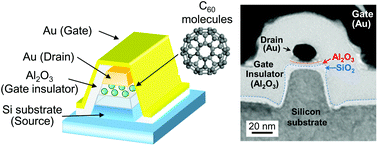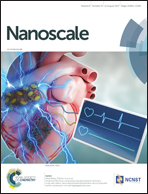Vertical resonant tunneling transistors with molecular quantum dots for large-scale integration†
Abstract
Quantum molecular devices have a potential for the construction of new data processing architectures that cannot be achieved using current complementary metal–oxide–semiconductor (CMOS) technology. The relevant basic quantum transport properties have been examined by specific methods such as scanning probe and break-junction techniques. However, these methodologies are not compatible with current CMOS applications, and the development of practical molecular devices remains a persistent challenge. Here, we demonstrate a new vertical resonant tunneling transistor for large-scale integration. The transistor channel is comprised of a MOS structure with C60 molecules as quantum dots, and the structure behaves like a double tunnel junction. Notably, the transistors enabled the observation of stepwise drain currents, which originated from resonant tunneling via the discrete molecular orbitals. Applying side-gate voltages produced depletion layers in Si substrates, to achieve effective modulation of the drain currents and obvious peak shifts in the differential conductance curves. Our device configuration thus provides a promising means of integrating molecular functions into future CMOS applications.



 Please wait while we load your content...
Please wait while we load your content...